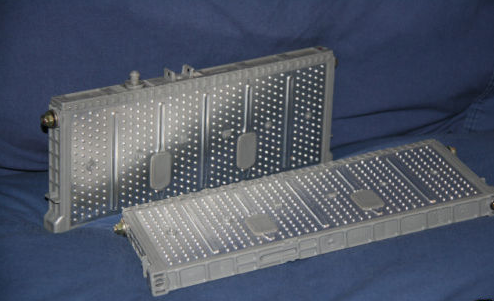I'm thinking of getting a new battery system for my EV conversion. Right now I'm using a Prius Gen 2 NiMH pack in a 6S2P setup (43.2 volts nominal @ 13 Ah), which cost me $144 in December of 2009. I can conservatively pull about 330 watt-Hours, so it works out to 43 cents per Watt-hour.
(Nominally it is 561 Wh for the pack, but there is considerable voltage sag at the end which reduces the amount of energy I can extract). The nominal price/performance is 26 c/Wh….
Let's price out some LiPo solutions….
| 18650 cell (single) | LiPo | $4 | 2.4 Ah | 3.7V | 8.8 Wh | 45c / Wh |
| 18650 cell (single) | LiPo | $7 | 2.8 Ah | 3.7V | 10.36 Wh | 68c / Wh |
| Zippy Flightmax 8000 mAh 6S1P 30C | LiPo | $88 | 8 Ah | 22V | 178Wh | 49c / Wh |
| Zippy Flightmax 8000 mAh 5S1P 30C | LiPo | $74 | 8 Ah | 18.5V | 148Wh | 50c / Wh |
| Zippy Flightmax 8000 mAh 4S1P 30C | LiPo | $58 | 8 Ah | 14.8V | 118Wh | 49c / Wh |
| Zippy Flightmax 8000 mAh 2S1P 30C | LiPo | $28 | 8 Ah | 7.4V | 59Wh | 48c / Wh |
| Turnigy 5800 mAh 8S 25C | LiPo | $100 | 5.8 Ah | 29.6V | 172 Wh | 58c / Wh |
| Zippy 5000 mAh 10S 25C | LiPo | $106 | 5 Ah | 37V | 185 Wh | 57c / Wh |
I checked the prices in May (2013.05.20) and there was no change in prices. But there are some bigger cells coming on the market which might change things. This is from dealextreme.com:
| 26650 cell (single) | LiPo | $7.60 | 6.0 Ah | 3.7V | 22.2 Wh | 34c / Wh |






 I just won a bid for twelve Prius packs! They should hopefully be arriving later this week or early next.
I just won a bid for twelve Prius packs! They should hopefully be arriving later this week or early next. 




Recent Comments